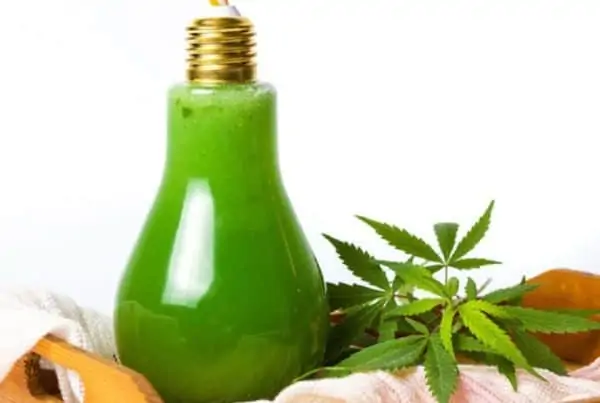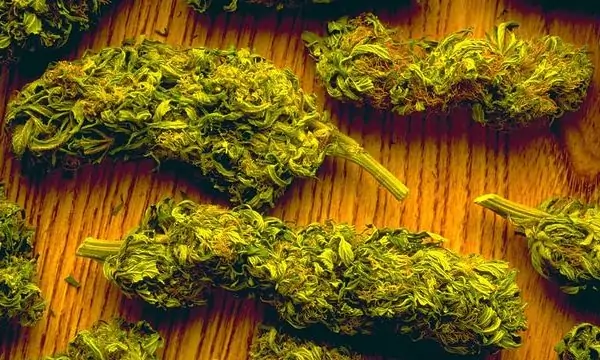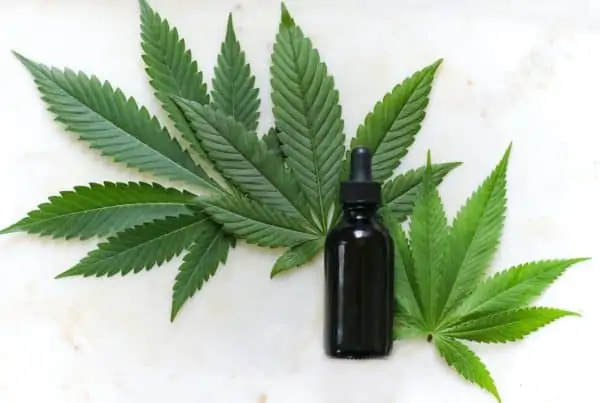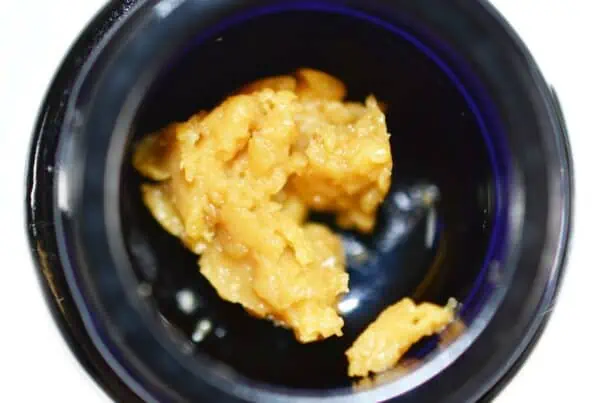TABLE OF CONTENTS

How Long Do Edibles Last?
How long do edibles last? If you’re a first-time user, you may be wondering how long your edible high will last? While there’s no one-size-fits-all answer to the question, our blog post covers how edibles take effect inside the body. We'll teach you how to have a fun and safe experience.
What Are Edibles?
First, let’s start with the basics. Edibles are food products infused with weed oil. They vary in size, shape, form, potency, taste, and quality. They contain THC, CBD, or a mix of both cannabinoids. As more states continue to legalize weed, the popularity of edibles will continue to rise.
Edibles make a great alternative to the traditional way of consuming pot: by smoking. Eating edibles avoids the need to inhale harsh smoke. Plus, it doesn't harm your lungs. Because of the way it’s metabolized in the digestive tract, edible highs can be much longer-lasting and more intense than the high you get from smoking or vaping.
Edibles, however, can take longer to kick in than smoking, vaping, or sublingual delivery. Of course, how long edibles take to kick in depends on a variety of factors. Everything from your metabolism to the dosage can affect how soon and how long you feel the effects. Our tips can help you understand edibles better and avoid “greening out.”
How Long Does It Take For Edibles To Kick In?
Edibles can take between 30 minutes to 1 hour before you can feel the effects. Sometimes, they can take longer, which can make first-time users impatient. An edible’s active ingredients (cannabinoids) affect the speed of onset. For instance, a product with higher THC levels can take effect much faster than one with a micro-dose of THC.
When taking CBD-rich edibles, you may have trouble realizing when they’ve taken effect. Why? CBD doesn’t produce the intense psychoactive effects of THC. A CBD user may feel clear-headed, relaxed, and happy without the high. The speed of onset depends on how the product is metabolized inside the body.
Sublingual Delivery
Some edibles like lollipops, lozenges, and gum are not directly swallowed. Users slowly consume the edible, while its active ingredients are broken down by saliva. They enter the body through mucous membranes in the mouth. Sublingual absorption results in a faster onset of effects compared to ingesting edibles.
Chewables
Most edibles come in chewable forms such as cookies, brownies, gummies, and other treats. These edibles take longer to take effect because they have to go through the entire digestive process to enter the bloodstream and then the liver. In the liver, the ingredients are metabolized and then released back into the bloodstream and brain.
What Factors Affect an Edible High?
Product type and cannabinoid dosage are critical factors in determining the speed of effect onset. Other factors that can affect your edible high include factors relating to your lifestyle and genetics. These factors include your diet, metabolism, weight, gender, and tolerance to weed.
Even after considering these factors, determining how long it takes to feel the effects can be hard. Some users may become impatient because they don’t feel anything within a few hours. If it’s your first time trying edibles, avoid taking more than one dose for an entire day, even if you didn’t feel any of its effects. This can help reduce its side effects.
How Long Does an Edible High Last?
Now, let’s get to the question of the moment: how long does an edible high last? For the most part, an edible high lasts far longer than smoking or vaping weed. An edible high depends on the dose, potency, and lifestyle and genetic factors listed above. An edible high can last between six and eight hours.
Predicting how long a high will last is impossible. In fact, a 2016 study analyzing Twitter data on edibles found that most users had varying high lengths. After analyzing over one hundred thousand tweets, researchers found that an “unpredictable” high duration was the most common side effect of edibles.
Based on previous studies, peak THC blood levels after eating an edible occur around three hours after consumption. This means that at the three-hour mark you will feel the most intense THC effects. Over the course of the experience, the intensity of the high will taper. Eventually, you won't feel the intoxicating effects at all.
Edible Types
As mentioned above, edibles come in many forms. Candy edibles are one of the most popular options. This category includes gummies, lozenges, hard candy, chocolate, chewing gum, and other sweet treats. Baked goods such as cookies, brownies, and other desserts are also very popular.
THC or CBD-infused coffee, tea, sodas, beer, and other drinks are seeing an uptick in popularity. Pot edibles are essentially anything you can safely eat or drink. Weed can be infused into butter, oil, and other cooking ingredients. Then, you can infuse the edibles into a wide range of meals and drinks from the comfort of your home.
How Much To Eat?
Because of the unpredictability of the edible high, it’s important to follow a few general guidelines to keep you safe and relaxed. Edibles sold from licensed producers include their serving size. They list the amount of cannabinoids that are in a single serving and in the entire package. Many edibles contain 10 milligrams (mg) of THC per serving.
Some brands may only list the total amount of milligrams for the entire package. In this case, it’s up to you to divide between the total cannabinoid content and the number of servings available. A 100 mg edible containing 10 gummies, for example, would contain about 10 mg of THC per gummy. Edibles such as brownies and cookies can be harder to determine their serving size.
Read the Label
Before you ingest any product, you should always check its label. Check its label for the amount of THC or CBD it has per serving. If it only lists the total cannabinoid content, you’ll have to make your best guess on the amount per serving size.
Start Slow
For novice users, it’s safer to start with the smallest dose possible. For some, that may be 5 or 10 mg depending on your tolerance for weed. Starting low can help you slowly and gradually increase your dose to get your desired effect.
THC
Eating THC in edibles is very different from smoking. Even if you have a high tolerance for smoking or vaping weed, that won’t mean you can handle your edibles. In fact, a 2015 report from Colorado found that eating 1 mg of THC produced comparable behavioral effects as smoking 5.71 mg of THC.
THC doses over 20 to 30 mg per day can increase the risk of experiencing negative side effects. Side effects include fatigue, dizziness, tachycardia, and dependency. According to researchers, eating high amounts of THC can “induce tolerance without improving efficacy.” THC tolerance can usually be improved with a short consumption break of about 48 hours.
“
There are over 300,000 jobs in the cannabis industry. CTU trained me for one of them!

Makes $24.50 @ THC +
CBD
CBD overconsumption is harder to identify because of the lack of psychoactivity. Because it doesn't produce a high, you won’t feel as much of the side effects associated with high doses of THC. High doses of CBD can still produce adverse side effects such as fatigue. When assessing its effects, it’s better to start with a small dose in the evening since it can make you sleepy.
Edibles combine your favorite foods and drinks with the power of weed. It’s hard to forget how intense they can be. Edibles can take several hours to take effect and the high can last up to eight hours. As always, follow our edible dosage tips to learn how to safely enjoy these tasty treats.

Karen Getchell
Karen gained expertise in developing training programs and technical documentation as a Senior Editor at Cisco Systems. She began her journey in cannabis as a patient, searching for a way to heal herself. When she perfected a method for making cannabis oil, other patients began to seek her out. An early adopter of CBD medicine, she started her CBD-infused-products business in 2014. Over the last two decades, Karen has taught hundreds of patients and caregivers how to select strains, infuse oils, and extract cannabinoids.
When she isn’t teaching cannabis cooking classes, Karen works as a cannabis business consultant, writes for online cannabis publications like Cannabis Training University, Leafly, and Weedmaps, and runs a CBD-infused-product business.











 Jeff was involved in an accident where he endured a traumatic brain injury. He had a week-long stay in ICU where brain surgeons
Jeff was involved in an accident where he endured a traumatic brain injury. He had a week-long stay in ICU where brain surgeons  100% risk free money back guarantee within 48 hours after purchase if student has not completed any of the courses or exams.
100% risk free money back guarantee within 48 hours after purchase if student has not completed any of the courses or exams.